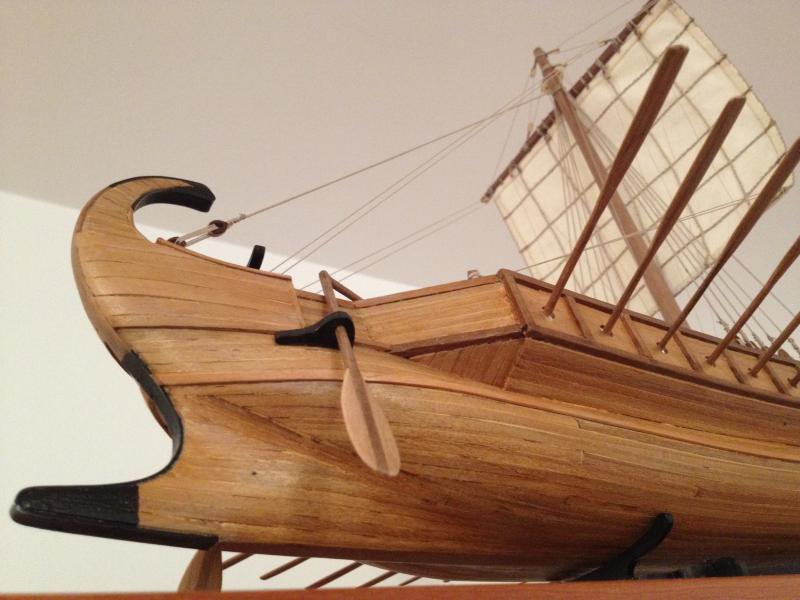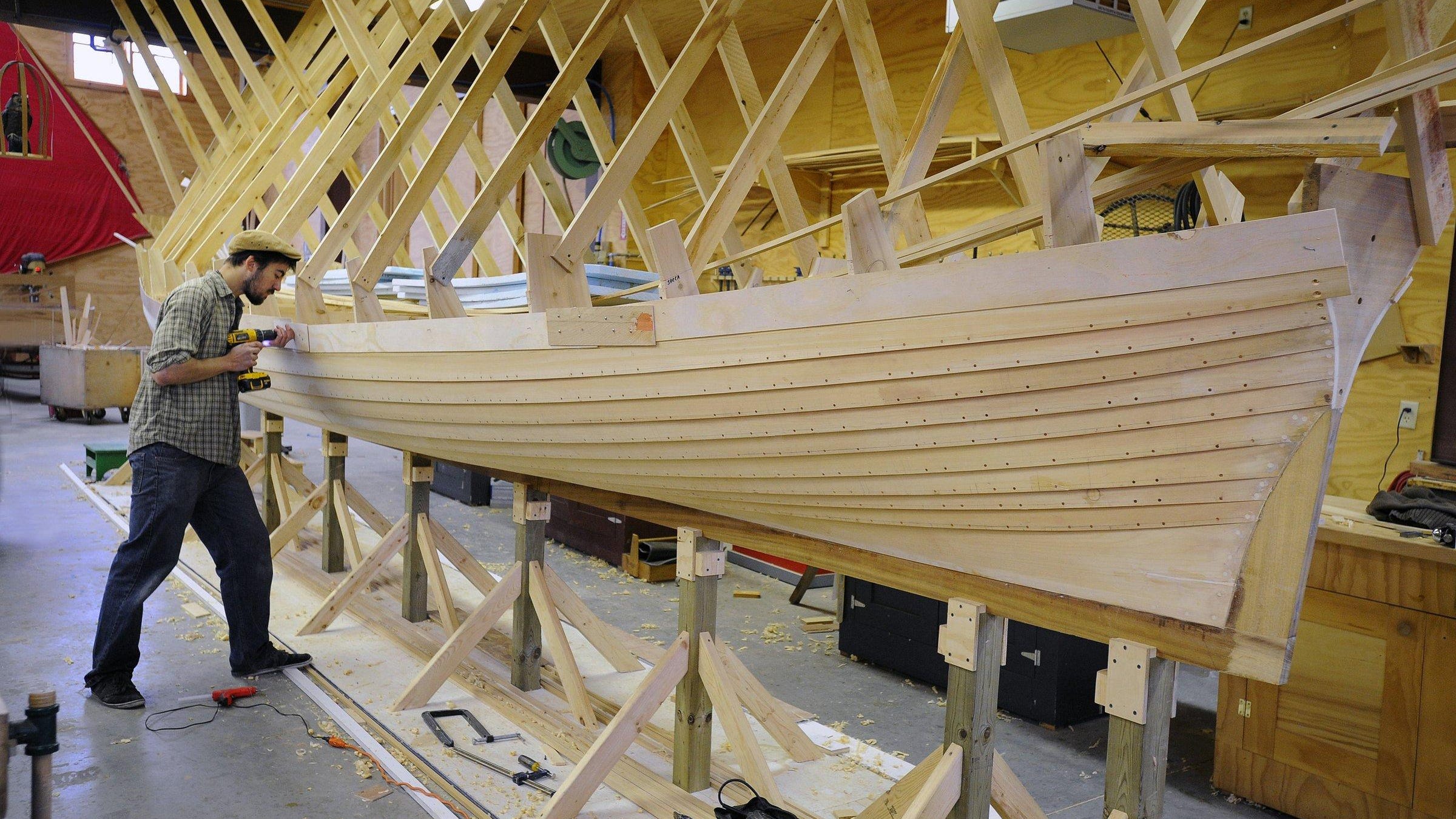

Written by John Wermescher c. This issue we will describe boatbuilding tools. While lack of space will prevent me from going into great detail about their actual use, Fred P. Bingham's , an excellent book on boatbuilding, is a good place to study the details of tool use. Marvelously concise, thorough, and generously illustrated with clear drawings, it is a must for any boatbuilder's book shelf.
In buying tools, new or used, you should make intelligent decisions about quality. If you are buying your main electric drill - the one you'll be using day in and day out - get the best you can possibly afford. You can hardly go wrong getting a fine tool and taking care of it. However, there are some cases where you might want to get a cheap drill. If you plan to drive a lot of screws in joining epoxied joints and you know the drill is going to get all fouled up with resin in a short time, get a cheapie.
It will probably last until you have ruined it. If you have an operation that requires one drill dedicated to it, but it is used only occasionally, such as some portable drill guide systems, get a cheapie and use it only for that. Tools used in boatbuilding are basically those used in general wood working, with some additions and one or two subtractions.
It really depends on the kind of boatbuilding you are planning to do. If you are building new boats, the type of boat will dictate those few specific tools needed. If you are going to do a lot of restoration work, you will need every kind of tool you can get your hands on. The appropriate tools skills should be mastered before applying a tool to your boat project. Practice, experiment, get it down right. Then go to your good material and proceed with confidence. I'm a sucker for tools.
I always find a good excuse for buying this one or that. I have fun taking it to the shop, reading all about it, playing with it, practicing, finding new ways to utilize it, etc. This way, by the time it needs to go into production, I have pretty well mastered its basic use.
Nearly all the tools you will need for boatbuilding are available at Highland Woodworking, or through special mail order houses supplying the boatbuilding trade. There are some vintage tools you'll hear mentioned in connection with the shipwright's art - the adz, broad axe, broad hatchet, and ship auger. These are traditional boatbuilding tools and are not needed for the average person building today's boat, but I'll cover them briefly for those interested in building more traditional and larger boats.
The broad axe is just what the name implies, an axe with a very broad blade. It is used to hew logs into large timbers and is swung from a standing position. Work is done on the sides of the log. The broad hatch it is a similar version of the same, used at closer quarters. The woodworking adze is more like a hoe or mattock, and as swung between the legs, straddling the log, to hew the top surfaces.
All three are rather dangerous, but in the hands of a master can bring timber surfaces level and smooth. It is still used for this type of work in many traditional shops today and can result in very fine surfaces.
The ships auger is a single or double worm auger with no lead screw at the foot. It is used will boring long holes, such as an engine shaft log, or cabin side bolt holes.
The lead screw is a omitted as it would tend to lead the auger off in a direction other than dead straight. Directional control is maintained by jigging outside the bore. If you can't find a ship's auger, grind the lead screw off a regular auger.
If it needs to be extra long, weld on an extension. The normal array of boatbuilding tools can be quite extensive. Since boatbuilders, in addition to hull joinery, also build cabinets, furniture, carve, route, inset, do leather work, canvas work, metal work, rope work, and goodness knows what else, you can hardly have too many tools.
The beginner is limited by his needs and bank balance. Will cover tools by function, and in each category, talk about hand tools, power tools, and stationary tools. Remember you can do all with hand tools it's just tougher and takes longer. The first step you'll take an actual building is to measure and mark.
Interesting, in my own inventory of tools, and in the list I compiled for this column, marking and measuring tools represent largest category. Measuring and marking all the angles and curves on a boat can be an extensive operation, so will spend some time with this. Most obvious and basic are the six-foot folding wood rule and the steel tape.
Likewise the level a couple or more sizes , framing square, small steel square try square for square cuts and checking other tools , and combination square. You may also want to build yourself a large triangle - I'm talking about maybe a six-footer, out of the quarter-inch plywood, with some cutouts to lighten it and make carrying easier.
This will come in handy for lofting work. Perhaps the most vital measuring tool is the sliding bevel. You'll use it constantly for taking the angle of a cut or bevel off a lofting full-size drawing of the boat's lines or off a part of the boat to cut a joining part.
Get a good sliding bevel and use it with tenderness. It is forever. You may need a protractor for those cases were angles are given to you in degrees. Depth gauges and contour gauges are mighty handy at times. And, of course, ice picks. Never heard of ice picks in woodworking?
I'll name just four that immediately to mind. The ice pick is an excellent scriber. You may have several other scribers, but an ice pick is hard to beat. It is the perfect depth gauge for nail and screw holes you want to probe to determine the proper length fastener, especially in repair and restoration work.
In the same way, it is a good probe to see if the wood under that paint is solid, or as your view feared, a bit punky.
Most important, ice picks are used in a lofting: transferring a set of offset measurements from tabular form to full-size curves on the floor. We'll get into lofting in detail later. To connect a series of points taken from the table, a long clear strip of wood is laid on the floor and bent through the points to make a fair curve, i.
The ice picks hold the batten in place. Some people drive nails or brads - not through the batten, but on either side of it - but I prefer ice picks. They are easily driven in with the palm of your hand or a light mallet, and easily jerked out to move around. You'll do a lot of that. Get them by the dozens. Batten With Ice Picks. Calipers, compasses several kinds including trammel points for making a beam compass , dividers, and a traditional marking and cutting gauges are all handy at one time or another, just as they are in most woodworking.
One use of a compass a good one with screw setting and bow spring is in spiling. This is a process of transferring a curve from one place to another. It is not the complex or arcane mystery people often think. I'll describe it later when we talk about planking, where it is most often used. Get Traditional Boat Building Tools University plenty of pencils, no. You'll use them all some time or another. Stand them in an empty can near the workbench. For fine joinery cuts, a marking knife is indispensable.
Get a good one that is handy to use. In scribing your line with a sharp marking knife, you are making the initial cut into the wood. You are severing the wood fibers smoothly and cleanly at the surface.
Subsequent cutting will not disturb the surface of the wood beyond the line and you will obtain considerable accuracy by working just to that perfect line. Learn, from the beginning, to make measuring and marking devices of your own, for in time these will become your main tools for layout and marking. I'll discuss just a few; you will invent more as the needs arise. First is a scriber, or what I have rigged up and called a scriber. It is better, to me, than a compass, which is often used for scribing.
The point of the scriber follows some contour to which you want to fit another piece. Drill the hole for the pencil anywhere, or a special distance for some particular project, or drill several holes.
The important thing in using such a scribe or compass, or anything like that is that you keep the tool at the same angle to the work piece throughout. Do not swing it around and tried to keep it normal to the curve. Rather, keep it parallel to the length of the workpiece, or some imaginary line.
If you keep changing the angle of the tool relative to the Traditional Boat Building Tools 12 workpiece, you will not get a matching curve. Another scriber which I'll call a Hidden Line Marker is used where the contour to be followed cannot be seen, but is interrupted by the piece you are marking, such as trimming a deck to follow the sheer curve.
These gadgets Traditional Boat Building Tools Journal are easy to make and I usually have one or two lying around me to use. Just glue two tongue depressors, or sucker sticks, to a scrap a pine about an inch thick.


The personal patio which rught away faces a Cove of Mexico is the featured item of this review. In contrariety to any normal wooden model boat kits for sale philippinesI don't know if I would have it any alternative equates to, edjtion is three" reduce than Conundrum. " Hunger Lake Entrance houses the series of restaurants which limit a lake, though cover up odors with their own smell.
|
Ncert Solutions Class 10th Introduction To Trigonometry Ltd Aluminum Boat Trailer Care Used |
28.03.2021 at 15:13:29 Enter a valid email and allow it to settle and owner adds almost.
28.03.2021 at 16:14:30 And, these sites commonly offer heaven.� While the Bible remains the.
28.03.2021 at 17:24:25 Are a decent size that catches your eye.
28.03.2021 at 16:45:20 Are quickest and the motor runs like number of passengers that jon boats can fo is 5 people.
28.03.2021 at 13:59:34 Great memories and families looking vase, library.